Willy Chavarria is Just Getting Started
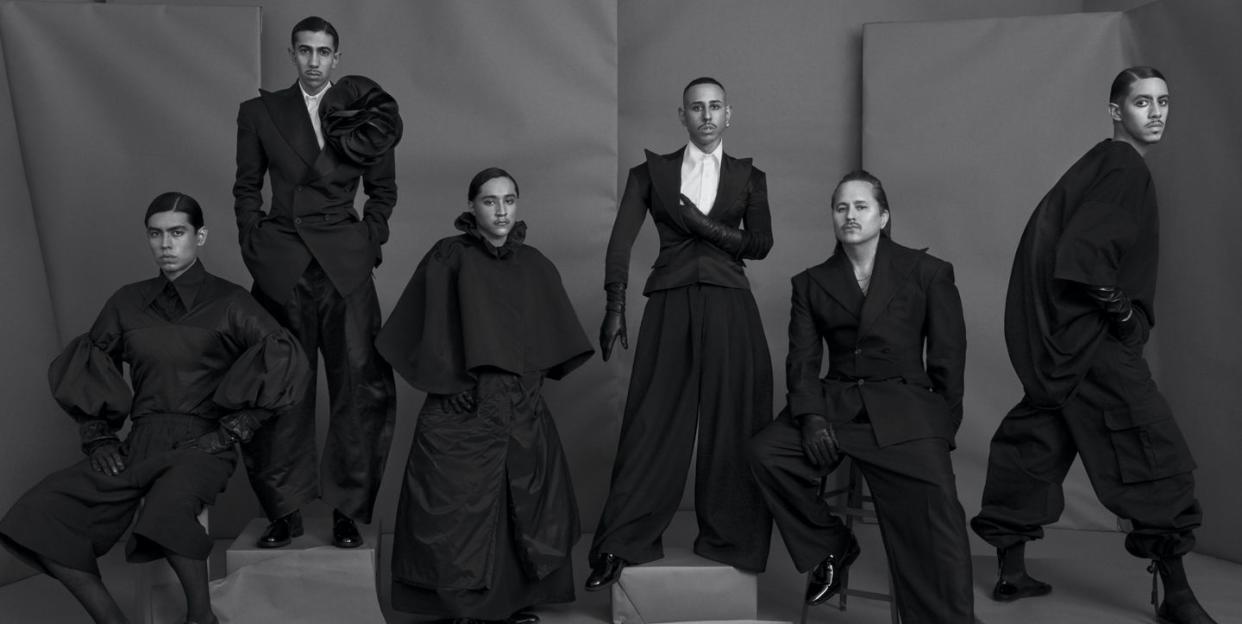
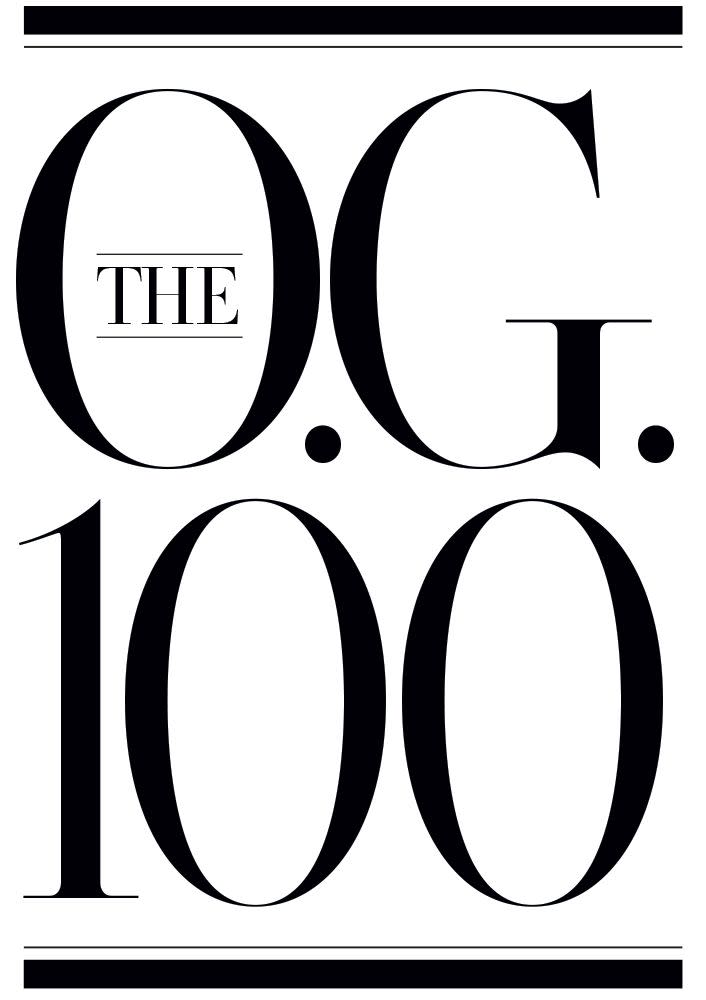
It was only last year, while attending Willy Chavarria’s fall show in New York, that I made note of a truth that doesn’t get less troubling with time. Mixed, in every possible sense, the crowd caused me to reflect on how seldom in two decades of covering fashion I’d seen such a diverse turnout. And with that thought came an inevitable reckoning with the fact that in mainstream culture, people—and especially minorities—are so routinely displaced, miniaturized, and marginalized that sometimes without even realizing it they become invisible to themselves.
Whether you call it assimilation or erasure, Chavarria is having no part of it. One of the rewards of watching this biracial son of an Irish-American mother and a Mexican-American immigrant father, raised among laborers in the farm fields of California’s San Joaquin Valley, make his way, in just under a decade, from being an obscure journeyman at midlevel labels to becoming in middle age perhaps the most highly placed and lauded Latino designer in the American fashion industry is knowing that he will never abandon his roots.
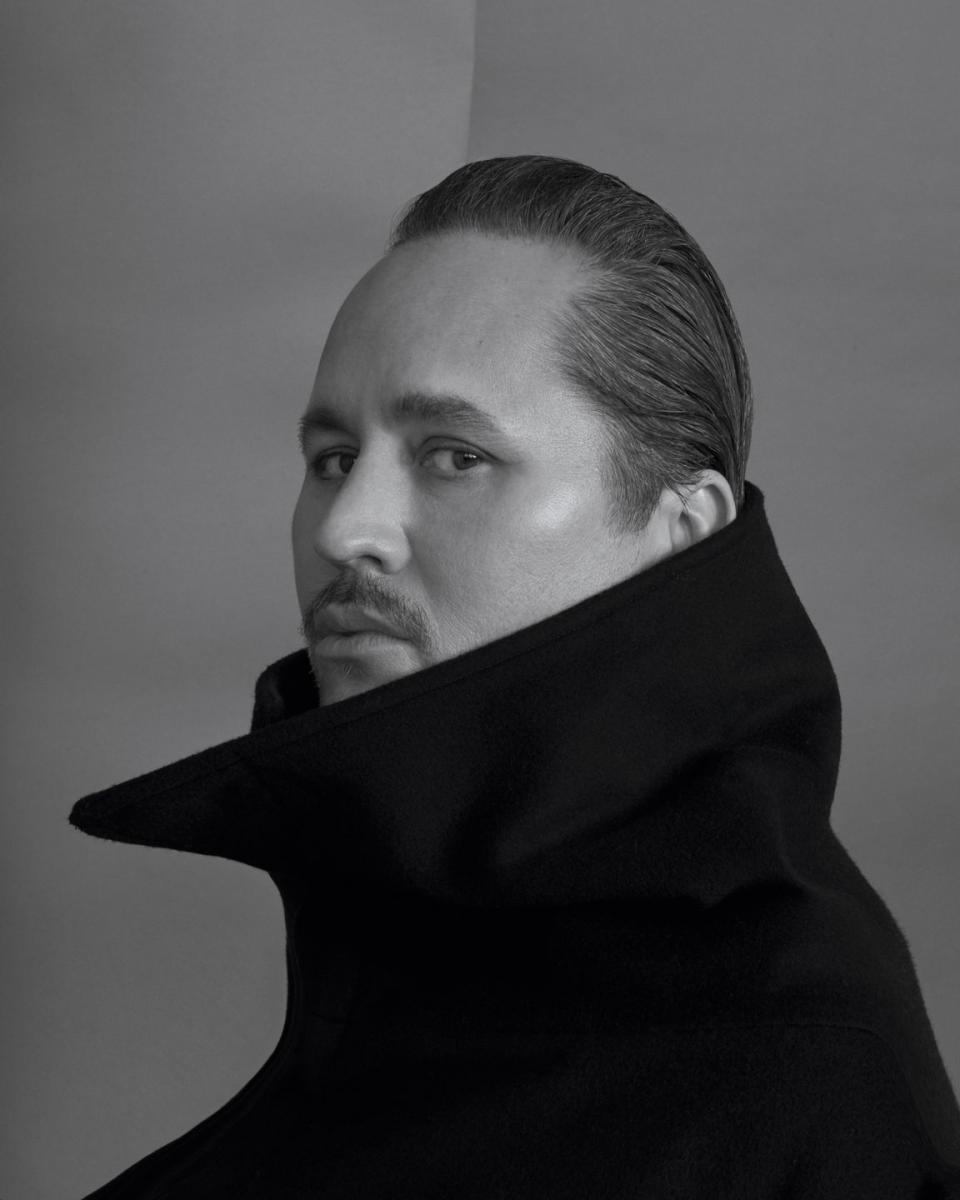
“I feel like I’m just getting started at 55. I used to say to myself, ‘This is so late in life compared to most people.’ Now I’m just, ‘Fuck it,’ ” Chavarria says. “I’m very happy with where I am. I look at other designers who thrive on their lives being completely dedicated to their work, and I’m a little bit different. I’m a Cancer. A big part of me likes to be home, cooking and watching TV and as far away from fashion as I can get. It’s always been important to me to have that balance, to pursue this whole thing my way and not the way the industry has carved out in the past. Maybe I won’t end up making all the money in the world, but I have a great husband and decent health. I make my coffee and start my day. There’s no reason in the world I can’t continue to create the way I want for the rest of my life.”
From the outset of his independent career as a menswear designer, Chavarria conjured an unlikely and hybridized vision encompassing the various communities he identifies with—Latinx, immigrant, LGBTQ—in all their glorious dispersion. Since then he has doubled down on his identity and his nonconformist ethos, which is distinctly at odds with that of a business that traditionally thrives on monochrome sameness.
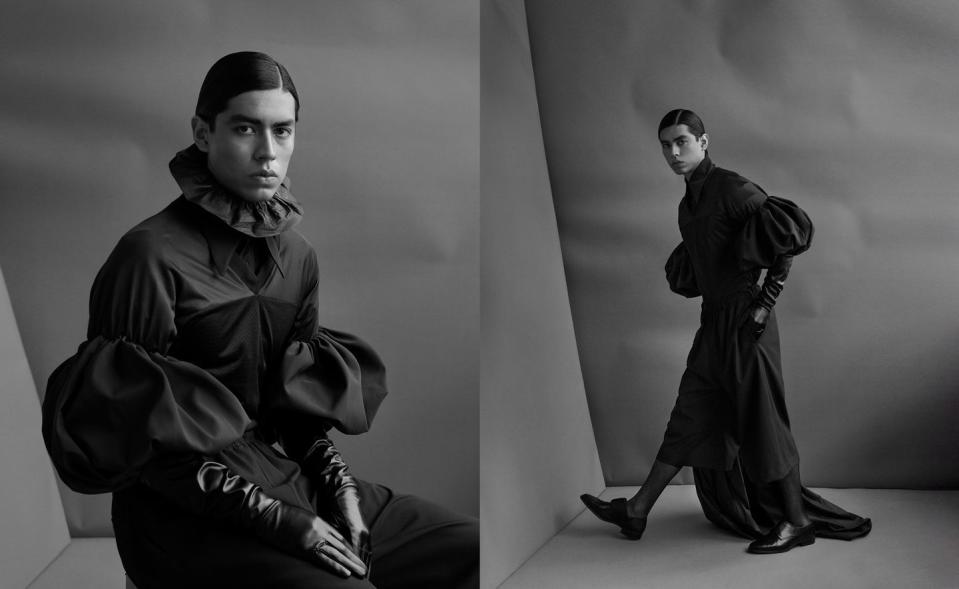
By 2015 he was doing it under his eponymous label by mounting renegade shows during New York Fashion Week in places as unlikely as the Eagle, New York’s most venerable gay leather bar. Now he does it at the multibillion-dollar international megabrand Calvin Klein, where he serves as the senior vice president of design, a corporate title that fails to capture the potential breadth of his creative reach.
“I used to be a little more punk. I was okay with being a little rough around the edges,” Chavarria says. “Lately I’m thinking a lot about ways to expand into design outside of apparel. There are so many ways to create and share beauty and move culture forward. It could be music eventually. It could be film.”
Along the way Chavarria has picked up accolades from the Council of Fashion Designers of America, gained a small but cultish following among the cognoscenti (Madonna attended his last collection; musician Moses Sumney accompanied him to the CFDA awards) and consumers, and won approval from the museum world when curators at the Metropolitan Museum of Art’s Anna Wintour Costume Center chose two designs of his—men’s trousers inspired by the exaggeratedly oversize styles favored by working class Latinos of the ’40s and ’50s—for inclusion in its blockbuster 2022 exhibition “In America: A Lexicon of Fashion.”
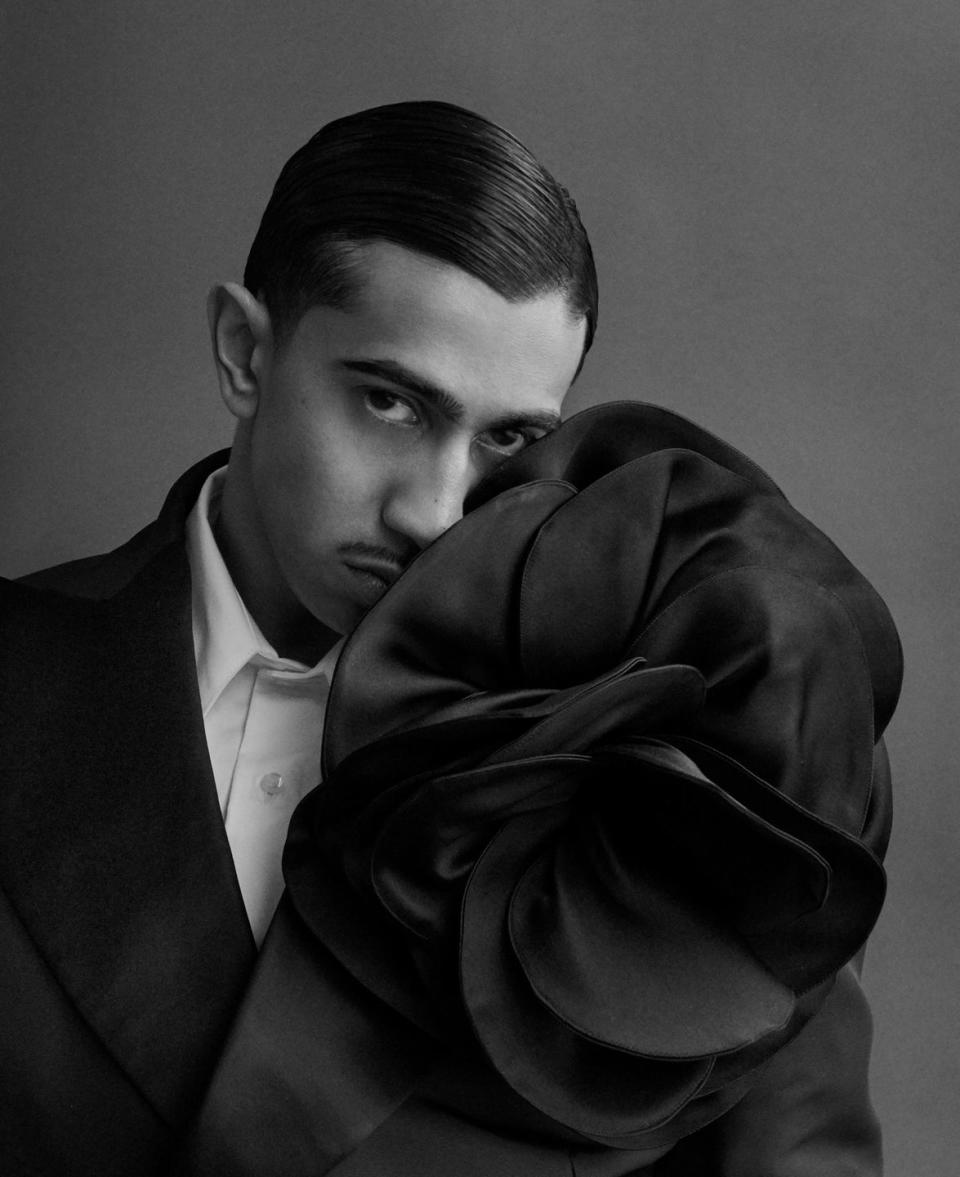
“In my work the influences need to draw from the right things in the past, have to be worn by the person most relevant for the moment, and yet need to have an impact spoken through the garment itself,” he says of the pieces, which first appeared on his spring 2022 runway. “Those pants were culturally relevant, culturally referential, but future thinking.”
Visibility is what you make of it. And when you consider how long it took the zoot suit to earn a place in a museum not dedicated to ethnography, you can begin to understand just how far Chavarria has come.
“Growing up as Latinas in fashion, we were never taught to embrace our roots or our Chicano fashions,” says Karla Martinez de Salas, the editor of Vogue Mexico and Latin America, who is of Mexican ancestry but was raised just over the border in El Paso. “What Willy has done, from castings to clothing, is to radically disrupt the vision people had of men’s fashions, of beauty standards, and of Latino masculinity.”
Patrick Charpenel, the executive director of El Museo del Barrio in New York, honored Chavarria last year at the museum’s annual benefit. “Willy’s visual expression of the Latinx experience illustrates,” as much as it underscores, “the importance and complexity of these vibrant communities,” he says.
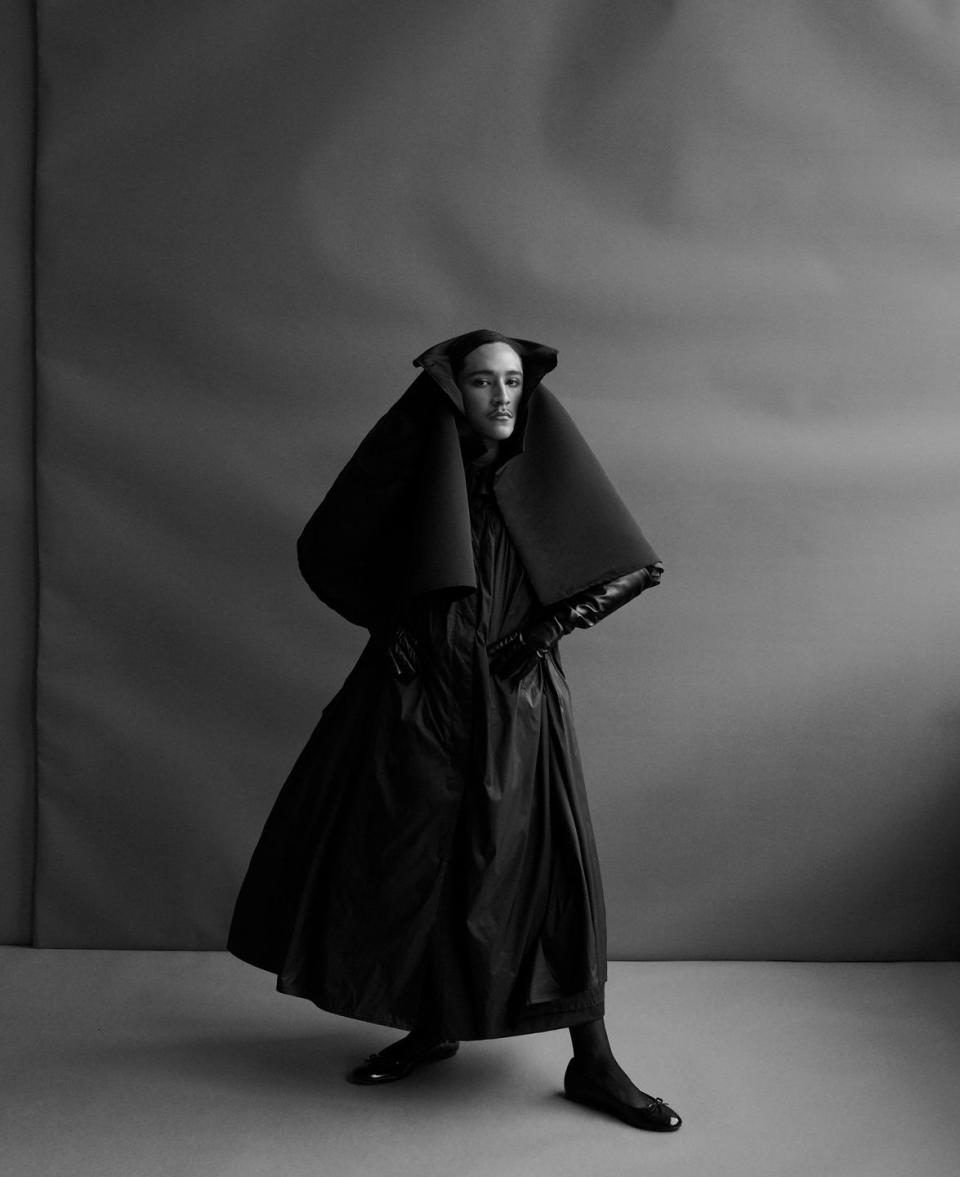
Just as in the work of seminal photographers like Graciela Iturbide or Louis Carlos Bernal, Chavarria’s design practice is rooted in a politics of self-representation. The self is a crucial distinction. In work and life Chavarria is not a Latino-in-translation.
You can see it in a visual vocabulary informed by his experiences growing up amid immigrant subcultures: sly, upside-down USA logos; W-pocket denims; blocky, voluminous silhouettes; tweaked versions of all black factory floor workwear; the fixation during the ’90s and ’00s in certain Los Angeles Latinx communities with brands like American Eagle, True Religion, and Nike and mass market generics like Hanes T-shirts and Dickies.
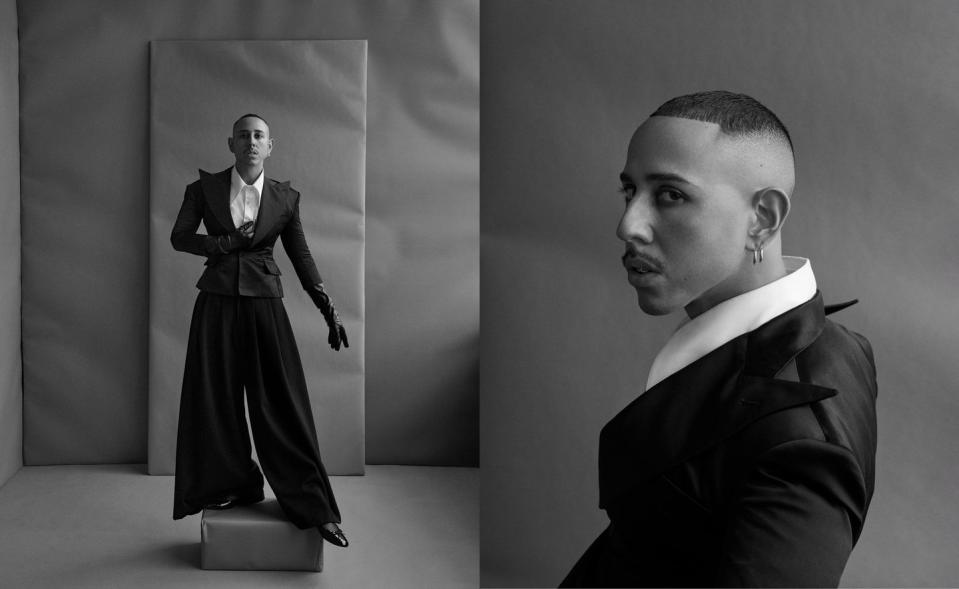
You can see it in the way Chavarria renders staples like khakis, puffers, and chore coats in supersize proportions, stuff he intentionally feminizes with details like skirting and bracelet-length sleeves. You can see it in denim pullovers made with immense ecclesiastical standup collars, and khaki boiler suits rendered as dresses, and immaculately tailored suits with pagoda shoulders and huge silk boutonniere flowers that seem to have been inspired by prison tattoos.
You can see it in the casts he assembles (often in partnership with casting director Brent Chua), which are stubbornly unlike those on anyone else’s runway. A Chavarria “hot guy” may be a meaty type with pockmarks and a paunch, or he could equally be someone like Pose actor Jason A. Rodriguez, who relates not at all to masculine pronouns.
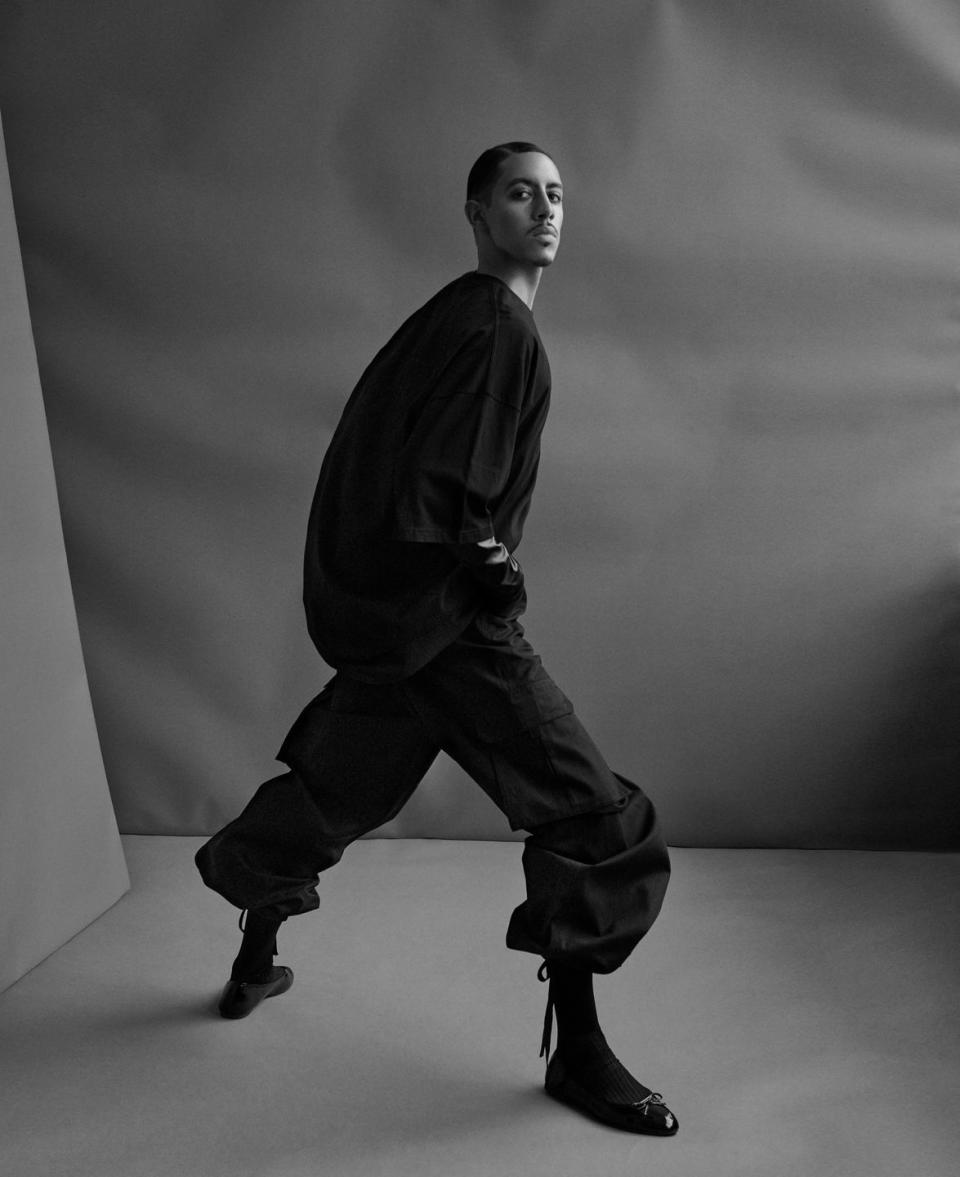
“My message has always been about empowering the people who inspired me,” Chavarria says. “With the credibility and the notoriety comes this ability to take broader steps. There’s a shift happening culturally, and for me getting bigger also means being able to raise more of my people up.”
What the designer brings to the job, says Valerie Steele, curator and director of the Museum at the Fashion Institute of Technology in New York, is “this sense of dignity and self-presentation that understands how clothes take up space in the world. His message is ‘See me, take account of me, show me respect.’ ”
There’s a story Steele likes to tell about the late Isabel Toledo, the Cuban-born designer who was among the great talents of 20th-century American fashion. “Isabel once said to me, ‘Imagine if you had never seen an umbrella opened,’ ” Steele says, quoting a designer whose life was cut short by cancer. “ ‘How would you know this tube becomes a beautiful parasol?’ ” Not only does Chavarria have a deep understanding of forms in space, she adds, he deploys fashion to unfurl something we have failed to recognize was there all along.

“My whole thing is that you want to show people forms of beauty they haven’t been exposed to,” Chavarria says. “You want to move them and let them know there is so much beauty in the world that does not get recognized.”
Lead image models, from left: Luis Morales at State Management, Ayemen Khan at Alien Management, Carlos Villa, Joseph Rayo, designer Willy Chavarria, and Nicholas Rodriguez. All clothing by Willy Chavarria.
This story appears in the March 2023 issue of Town & Country. SUBSCRIBE NOW
You Might Also Like

